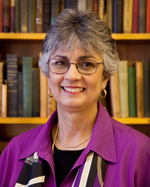
Rosemary Plumstead, Aesthetic Realism consultant with All For Education, teacher trainer, and NYC science teacher (retired), writes:
I love the way the Aesthetic Realism Teaching Method brings history to life and enables students not only to learn the subject but also to feel “This is about me!” The article “Fairer to Knowledge and People,” by my dear colleague Lois Mason (1947-2007), is a mighty instance. And as you’ll see, through this teaching method—which explains that the purpose of education is ‘to like the world through knowing it’—students come to have greater, more accurate feeling about what the world and people deserve.
The social studies lesson Lois Mason tells of in her article was about the horrific economic injustices in late 19th– and early 20th-century America. She describes how, because of the Aesthetic Realism method, her students learned the facts of history with tremendous success, and also became kinder, more just to one another.
In the issue of The Right of Aesthetic Realism to Be Known in which this article appears, editor Ellen Reiss writes that Lois Mason was “one of the most respected and loved educators in America.” I am proud to agree and am honored that, for many years, she taught the bimonthly workshop The Aesthetic Realism Teaching Method with me and our colleagues of All For Education—Barbara Allen, Arnold Perey, and Patricia Martone.
The article begins:
In the 30 years that I’ve used the Aesthetic Realism Method teaching social studies in New York City classrooms, I’ve seen how it enables students—including those who previously failed, who are frustrated and despairing—to learn, pass standard exams, graduate. They learn because this method meets their deepest hope: to feel the world is not an adversary, but something they can truly like. The basis is Eli Siegel’s landmark statement “The world, art, and self explain each other: each is the aesthetic oneness of opposites.”
When students see that history is composed of opposites, the same opposites they are trying to make sense of—for and against, justice and selfishness, high and low—they have pleasure learning, remember facts, want to be fair to the subject and to people in history and today, including their classmates and teachers.
Last spring I taught US History to 16- and 17-year-olds at New Utrecht High School in Bensonhurst, Brooklyn. Most of the students were juniors, but some were seniors taking US History a second time because they needed to pass the Regents exam to graduate.
I could see that these young people did not look forward to learning history. On arriving, they’d spend a lot of time hugging and greeting classmates they might have seen only moments before. It sometimes took them as long as ten minutes to settle down, and when they did, they were lethargic, staring blankly into space, looking out the window, answering my questions with a dull “Huh?” Some were late every day; for example, Amanda Anders.* When she arrived she sat in the back with a girlfriend and they passed notes to each other for most of the period. Other students sent and received text messages on their cell phones during class.
My students, like others throughout our country, are up against a lot. Many families in this once prosperous neighborhood are enduring economic hardship. An increasing number of these young people work long hours after school and on weekends to help meet family expenses. And I’ve seen that students can also use what they learn about aspects of our nation’s history—slavery, child labor, the treatment of Native Americans—to despise the world. “It hasn’t changed,” Adam Rodriguez said. And Juan Vega commented bitterly: “I treat people like they treat me. They don’t show me respect, I don’t show them respect.” >>Read more